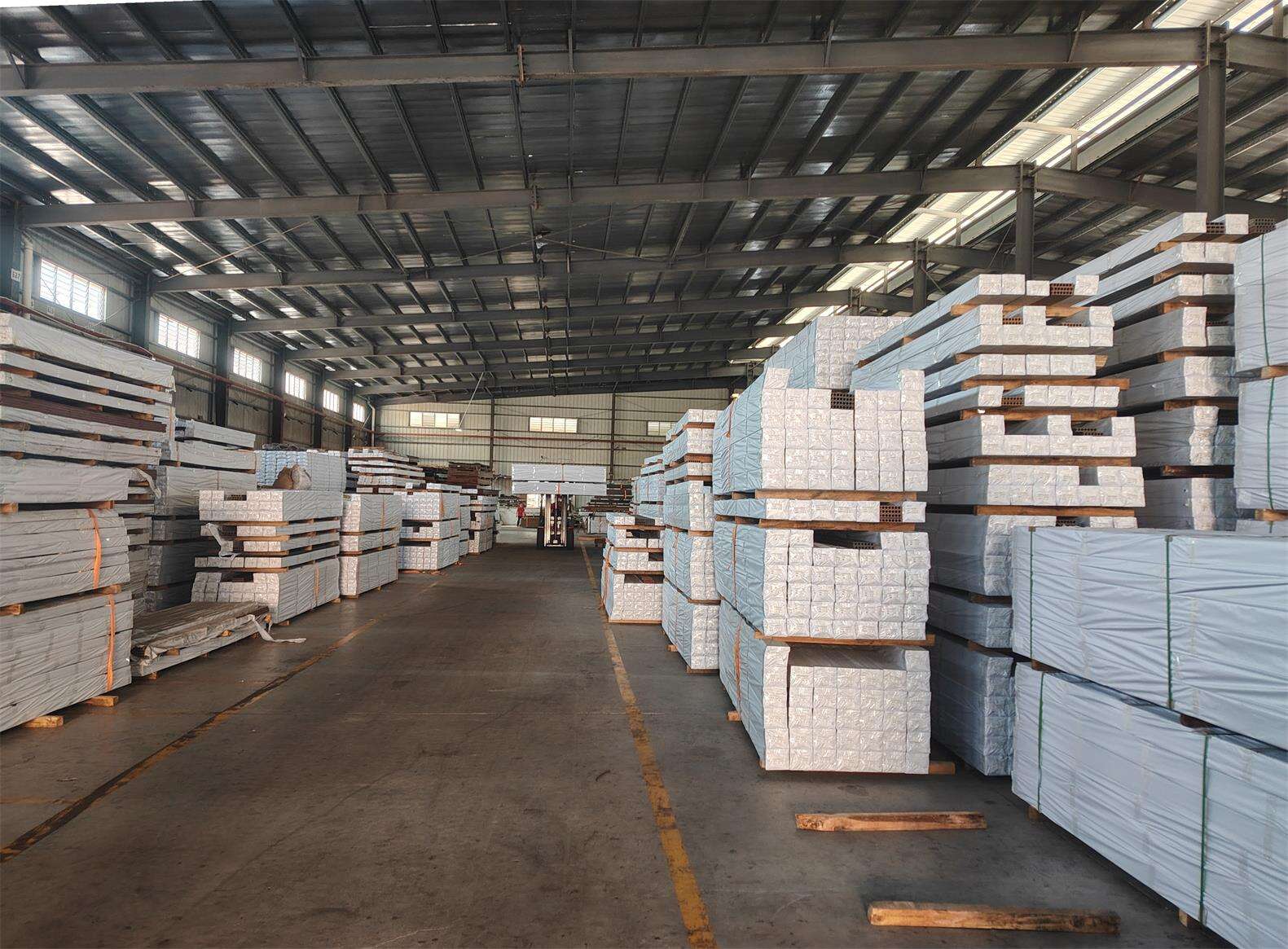Compreendendo as Características de Segurança Contra Incêndios em Sistemas Modernos de Grades Arquitetônicas
A integração de painéis de parede em grade na arquitetura contemporânea revolucionou tanto o design estético quanto os padrões de segurança na construção de edifícios. Esses elementos arquitetônicos versáteis desempenham dupla função: criar fachadas visualmente marcantes enquanto mantêm requisitos cruciais de segurança. À medida que as normas de construção se tornam cada vez mais rigorosas, as capacidades de resistência ao fogo dos painéis de parede gradeados surgiram como uma consideração crítica para arquitetos, empreiteiros e proprietários de imóveis.
Sistemas modernos de painéis para paredes de grade passam por processos rigorosos de testes e certificação para garantir que atendam ou superem os padrões de segurança estabelecidos. Os materiais utilizados na sua construção, normalmente ligas de alumínio ou aço de alta qualidade, são especificamente escolhidos pelas suas propriedades inerentes de resistência ao fogo. Este compromisso com a segurança não compromete a capacidade dos painéis de oferecer soluções arquitetônicas sofisticadas que realçam a estética dos edifícios.
Composição do Material e Propriedades Resistentes ao Fogo
Tecnologias avançadas de manufatura
O desempenho contra fogo dos painéis de parede de grade começa com a sua composição material. Os fabricantes empregam tecnologias de ponta para criar painéis que combinam durabilidade com propriedades resistentes ao fogo. Os materiais de base passam por tratamentos especializados e processos de revestimento que aumentam sua capacidade de suportar altas temperaturas e impedir a propagação do fogo.
Esses processos de fabricação frequentemente incluem a aplicação de revestimentos intumescentes ou tratamentos ignífugos que se ativam em condições de calor extremo. Quando expostos ao fogo, essas camadas protetoras se expandem para criar uma barreira isolante, protegendo efetivamente a integridade estrutural do painel de parede gradeado e da envoltória do edifício.
Critérios de selecção dos materiais
A seleção de materiais para painéis de parede gradeados segue diretrizes rigorosas que priorizam a segurança contra incêndios. Ligas de alumínio de alta qualidade são frequentemente escolhidas pela sua excepcional combinação de leveza e resistência ao fogo. Variantes de aço, especialmente aquelas tratadas com revestimentos avançados resistentes ao fogo, oferecem outra opção robusta para aplicações que exigem proteção contra incêndio reforçada.
Cada material passa por testes extensivos para verificar seu desempenho em diversos cenários de incêndio. Isso inclui a avaliação da geração de fumaça, níveis de emissão tóxica e manutenção da integridade estrutural durante a exposição a temperaturas extremas.
Normas de Teste e Requisitos de Certificação
Protocolos Internacionais de Segurança Contra Incêndios
Os sistemas de painéis de parede em grade devem atender a rigorosas normas internacionais de segurança contra incêndios antes de receber a certificação para uso comercial. Essas normas geralmente incluem testes de propagação de chamas, desenvolvimento de fumaça e resistência ao calor. Os procedimentos de teste simulam cenários reais de incêndio para garantir que os painéis funcionem eficazmente em condições extremas.
Órgãos de certificação realizam avaliações abrangentes que examinam não apenas os próprios painéis, mas também seus métodos de instalação e integração com outros componentes do edifício. Essa abordagem holística garante que todo o sistema mantenha suas propriedades resistentes ao fogo quando implementado em projetos reais de construção.
Indicadores de Desempenho e Conformidade
As principais métricas de desempenho para painéis de parede de grade incluem classificações de resistência ao fogo, que indicam a duração pela qual os painéis podem manter sua integridade estrutural durante um evento de incêndio. Essas classificações são geralmente expressas em horas e são determinadas por meio de procedimentos padronizados de testes que expõem os painéis a condições controladas de fogo.
Os requisitos de conformidade variam conforme a jurisdição, mas geralmente seguem os códigos internacionais de construção e regulamentações de segurança contra incêndios. Os fabricantes devem fornecer documentação detalhada sobre as capacidades de resistência ao fogo de seus produtos, incluindo resultados de testes e detalhes de certificação, para facilitar os processos de aprovação de projetos de construção.

Considerações de Instalação para Proteção Contra Incêndio Ideal
Requisitos de Instalação Profissional
A eficácia das características de resistência ao fogo de um painel de parede gradeado depende fortemente da instalação correta. Instaladores certificados devem seguir exatamente as especificações do fabricante para garantir que o sistema funcione conforme pretendido em caso de incêndio. Isso inclui espaçamento adequado, fixação segura e integração apropriada com barreiras contra incêndios e outros recursos de segurança.
Os protocolos de instalação frequentemente exigem ferramentas e técnicas específicas para manter a integridade das propriedades resistentes ao fogo. Devem ser implementados programas regulares de inspeção e manutenção para verificar se a qualidade da instalação permanece consistente ao longo do tempo.
Integração do Sistema e Recursos de Segurança
As instalações modernas de painéis de parede gradeados incorporam múltiplos recursos de segurança que atuam em conjunto para aumentar a proteção contra incêndios. Estes podem incluir barreiras corta-fogo, selantes contra fumaça e sistemas de junção especialmente projetados que impedem a propagação de fogo e fumaça entre painéis ou para outras áreas do edifício.
A integração desses recursos de segurança deve ser cuidadosamente planejada durante a fase de projeto e executada com precisão durante a instalação. Essa abordagem sistemática garante que todo o sistema de fachada mantenha suas propriedades resistentes ao fogo, ao mesmo tempo em que proporciona o impacto arquitetônico desejado.
Manutenção e Desempenho de Longo Prazo
Protocolos de Inspeção Regular
A manutenção do desempenho resistente ao fogo dos painéis de parede gradeada exige inspeções regulares e manutenção preventiva. Os gestores de edifícios devem estabelecer cronogramas abrangentes de manutenção que incluam inspeções visuais, procedimentos de limpeza e testes periódicos das propriedades resistentes ao fogo.
Avaliações profissionais devem ser realizadas em intervalos prescritos para verificar se os painéis mantêm suas capacidades resistentes ao fogo. Essas avaliações ajudam a identificar possíveis problemas antes que comprometam o desempenho de segurança do sistema.
Sistemas de Monitoramento de Desempenho
Sistemas avançados de monitoramento podem ajudar a acompanhar o desempenho contínuo das instalações de painéis de parede gradeados. Esses sistemas podem incluir sensores que detectam alterações na integridade do painel ou nas condições ambientais que possam afetar as propriedades resistentes ao fogo.
A documentação regular dos resultados do monitoramento fornece dados valiosos para manter a conformidade com as normas de segurança e planejar futuras atividades de manutenção. Essa abordagem proativa ajuda a garantir que as capacidades de resistência ao fogo permaneçam eficazes durante todo o ciclo de vida do sistema.
Perguntas Frequentes
Por quanto tempo os painéis de parede gradeados mantêm suas propriedades resistentes ao fogo?
Quando adequadamente mantidos, os painéis de parede gradeados normalmente retêm suas propriedades resistentes ao fogo por 15 a 20 anos ou mais. No entanto, essa duração pode variar conforme as condições ambientais, qualidade da instalação e práticas de manutenção. Inspeções e manutenções regulares podem ajudar a prolongar a vida útil eficaz desses recursos de segurança.
É possível adaptar retroativamente os painéis de parede gradeados para melhorar a resistência ao fogo?
Sistemas existentes de painéis para paredes de grade podem frequentemente ser aprimorados com tratamentos ou componentes adicionais resistentes ao fogo. No entanto, quaisquer modificações devem ser cuidadosamente avaliadas para garantir a compatibilidade com o sistema original e a conformidade com as normas de segurança atuais. Recomenda-se uma avaliação profissional antes de iniciar qualquer projeto de modernização.
Quais certificações devo procurar ao selecionar painéis de parede de grade resistentes ao fogo?
Procure por painéis que possuam certificações reconhecidas de segurança contra incêndio, como listagens UL, aprovações FM ou normas internacionais equivalentes. Essas certificações devem abordar especificamente classificações de resistência ao fogo, índices de desenvolvimento de fumaça e conformidade com os códigos de construção aplicáveis. Os fabricantes devem fornecer prontamente documentação de todas as certificações aplicáveis e resultados de testes.
Sumário
- Compreendendo as Características de Segurança Contra Incêndios em Sistemas Modernos de Grades Arquitetônicas
- Composição do Material e Propriedades Resistentes ao Fogo
- Normas de Teste e Requisitos de Certificação
- Considerações de Instalação para Proteção Contra Incêndio Ideal
- Manutenção e Desempenho de Longo Prazo
- Perguntas Frequentes

